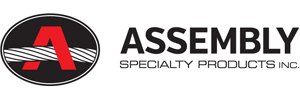OSHA Guide – Cranes and Derricks in Construction
MENU
- Introduction
- Employer Responsibilities
- Section 1400 – Scope
- Section 1401 – Definitions
- Section 1402 – Ground Conditions
- Sections 1403-1406 – Assembly and Disassembly
- Sections 1407-1411 – Power Lines
- Section 1412 – Inspections (with Section 1435(f)-Tower Crane Inspections) and Section 1436(p)-Derricks Inspections)
- Section 1413 – Wire Rope Inspection
- Section 1414 – Wire Rope – Selection and Installation Criteria
- Sections 1415 Safety Devices & 1416 Operational Aids
- Section 1417 – Operation
- Section 1418 – Authority to Stop Operation
- Section 1419-1422 – Signals
- Section 1423 – Fall Protection
- Section 1424 – Work Area Control
- Section 1425 – Keeping Clear of the Load
- Section 1426 – Free Fall and Controlled Load Lowering
- Section 1427 – Operator Qualification and Certification
- Section 1428 – Signal Person Qualifications
- Section 1429 – Qualifications of Maintenance & Repair Employees
- Section 1430 – Training
- Section 1431 – Hoisting Personnel
- Section 1432 – Multiple-Crane/Derrick Lifts
- Section 1433 – Design, Construction and Testing
- Section 1434 – Equipment Modifications
- Section 1435 – Tower Cranes
- Section 1436 – Derricks
- Section 1437 – Floating Cranes/Derricks and Land Cranes/Derricks on Barges
- Section 1438 – Overhead & Gantry Cranes
- Section 1439 – Dedicated Pile Drivers
- Section 1440 – Sideboom Cranes
- Section 1441 – Equipment with a Rated Hoisting/Lifting Capacity of 2,000 Pounds or Less
- Directory of States with Approved Occupational Safety and Health Programs
- Workers’ Rights
- OSHA Assistance, Services and Programs
- OSHA Regional Offices
- NIOSH Health Hazard Evaluation Program
Section 1437 – Floating Cranes/Derricks and Land Cranes/Derricks on Barges
This section contains requirements for floating cranes and derricks that supplement the other requirements of the standard. Because this equipment is highly specialized and is not used by most construction employers, this information will only address a few of the areas where additional or different requirements are specified for this type of equipment.
Inspections
Additional items must be inspected during the shift, monthly, and annual inspections. In addition, every four years, a marine engineer, marine architect, licensed surveyor, or other qualified person who has expertise with respect to vessels/flotation devices must survey the internal portion of the barge, pontoons, vessel, or other means of flotation.
Safety Devices
The following additional safety devices are required: barge, pontoon, vessel, or other means of flotation list and trim device; positive equipment house lock; wind speed and direction indicator (if a competent person determines that wind is a factor that needs to be considered).
Working with a Diver
When a crane/derrick is used to lift a diver or divers into and out of the water, it must not be used for any other purpose until all the divers are back on board.
Land Cranes/Derricks on Flotation Devices
The rated capacity must be reduced to take into account the additional sources of instability (list, trim, wave action, and wind) resulting from operating on water. Alternative means of physical attachment and an exception to the requirement for physical attachment are specified.
Equipment Designed for Use on Flotation Devices
Requirements for maximum list, trim, and wind speed are specified. Additional rules to ensure the structural integrity and stability of the equipment apply to employer-made (as opposed to manufacturer- made) equipment.

